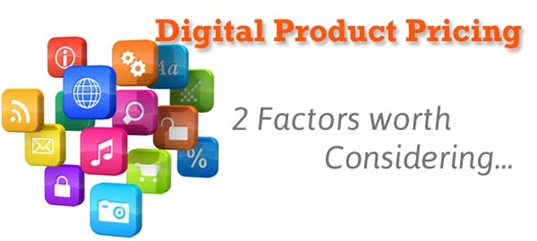Pricing has always been a dicey issue.
You ask any entrepreneur or creator regarding pricing factor, and a smirk will originate. Product managers are the ones who are always walking on a thin line: You keep the price low and it undervalues the product and you keep it high and it alienates the customers. ROI and profits charts are always there as well.
How to keep a balance between each of these elements and be successful?
When it comes to physical products, then it is somewhat easier to price a product. You calculate the raw material costs, include the man hours and infrastructure costs and the price automatically appears.
But when it comes to digital products, especially a software or application then there is no thumb rule to follow. More often than not, it is the industry standards or the ‘mood’ of the creator which determines the price.
There have several experiments and debates on this issue. During one such experiment, it was found that removing the $ symbol against the price increased sales (50 instead of $50)!
Definition of a Product?
Before analysing your product’s worth, it is recommended that you understand what is a product. Say you are selling software priced at Rs 10,000 which can keep track of all your files on a laptop. The product isn’t just that software and the code but it also includes the documentation, the assistance to keep it working and after-sale service. The product is a promise which you need to fulfil and unless this fact is acknowledged by the product seller, an effective pricing cannot be determined.
Perceived Value and Objective Value
There are always two values associated with any product: perceived and objective. Say a customer named Ramesh buys this file management product which can help him to organize his files on the laptop. In case Ramesh is earning Rs 1000 per hour, and he saves three hours daily by using the product, then his perceived value of the product is much more than its objective value of Rs 10,000. And in a perfect world, Ramesh knows that the software pays itself off within 3.5 days!
Moral of the story: Understand and read your customers; find out their pain points and increase the value they perceive. It is here that the product creation team should sit down with the programming team, and find out ways to increase the ‘perceived’ value of the product.
Price tags always have a reference point
Usually, people perceive the value of a product based on their previous experiences and existing products in that category; and create their own reference points.
When Microsoft released DOS in the year 1982, they set a price of $50. At that time, there was no mass market OS available in the market and people couldn’t perceive any value; hence the pricing seemed just right and people bought it.
After 7 years, when IBM launched their advanced OS called OS/2 1.0, they priced that $340. If you ask an expert product manager, he will tell that IBM created a masterpiece which was highly advanced compared to DOS. But what happened? It failed miserably. People had already made a reference point for an OS at $50 and $340 for ‘another’ OS seemed like a lot of money!
Moral of the story: Create an awesome product, which is completely unique and/or an improvised version of any existing product of the same category. Market the product differently and remove any reference point which the customer has regarding your product.
Why has Apple been successful despite over-pricing its products? It is because there is no reference point to compare. Apple products are created and marketed as if that is THE only option.
There are several books and websites dedicated to the subject of pricing. I admit that it is not a science, but it is certainly an art. At the end of the day, it is sales which matter.
The above two factors have been inspired from a wonderful eBook called – Don’t Just Roll the Dice – I read few days back, which talks about the pricing of a software product. It is free and extremely good read for product creators. You can download it from here.
This post was originally posted here. Please do share your views about pricing and how did you deal with it!






Aneja Raj
Very nice post Mohul! Lot of thought behind the article.